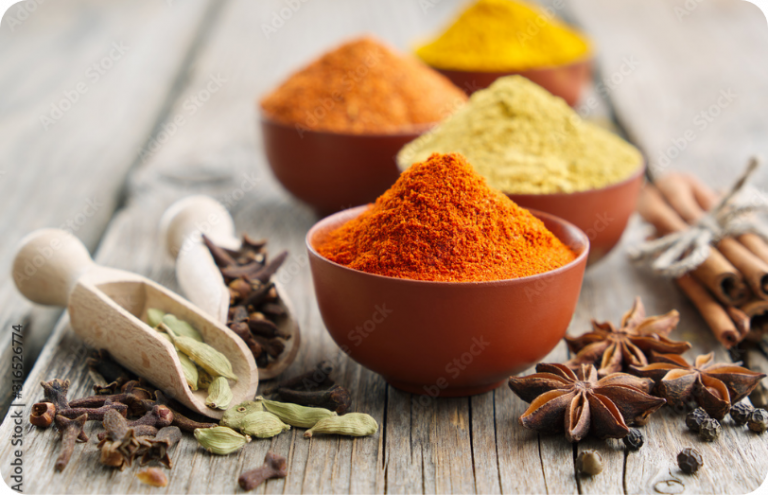At my recent talk at the Mayfair Hotel in Coconut Grove, there was one moment that had the whole room nodding, laughing, and suddenly feeling very seen. I put up a slide from the 2015 Snickers campaign: “You’re not you when you’re hungry.”
It was funny—because it’s true.
We’ve all had those moments where stress hits, blood sugar drops, and suddenly we’re not the calm, collected version of ourselves. We’re snappy, frazzled, ravenous… hangry. But what if that “not you” version is more than a meme-worthy mood swing?
In Ayurveda, that moment is a clear sign of imbalance—usually driven by Vata (too much movement, anxiety, depletion), Pitta (too much heat, intensity, drive), or both. And when we’re out of rhythm, our cravings start screaming for a quick rescue: salty snacks, sugar, caffeine, carbs. Not because we’re weak, but because our body is trying to self-regulate.
This blog is about decoding that chaos. I’ll break down:
- Why stress makes you crave junk food (through an Ayurvedic lens),
- What “hangry” really means,
- And how to respond with nourishment instead of guilt.
Cravings are communication. Let’s learn how to listen.
Let’s be real—most of us don’t crave kale when we’re stressed. No one is running to the fridge for a bowl of steamed broccoli after a tough day. Instead, we find ourselves knee-deep in a bag of chips, inhaling ice cream straight from the carton, or making suspiciously impulsive late-night decisions with a pint of chocolate gelato. Sound familiar?
You’re not alone. Emotional eating is a real thing, and stress and anxiety are often the culprits. It happens to all of us. Studies show that around 38% of adults admit to overeating or eating unhealthy foods due to stress, and nearly 50% of those people say they do it at least once a week. But why? Why does a chaotic day send us straight to the snack aisle instead of making us crave something nourishing?
Cravings Under Pressure: Why Stress Messes with What You Eat
“You’re not craving junk food because you’re weak—your body is trying to self-regulate.”
Let’s talk about it. When we’re stressed, our body goes into fight-or-flight mode, releasing cortisol, the infamous stress hormone. Cortisol was made to help us run from tigers—not reply to 47 unread emails, have awkward conversations, or survive a packed schedule with no lunch break.
One of cortisol’s sneaky little side effects? It triggers cravings for quick energy—aka sugar, salt, and fat. Our brain thinks, “We’re in danger! We need fuel!” and conveniently forgets that the “danger” is just Karen from accounting sending her fifth email in an hour.
Cue the cravings.
The problem is, junk food doesn’t actually fix anything. It gives a temporary dopamine hit (hello, instant gratification!), but then we crash, feel sluggish, and often end up in a cycle of stress eating that leaves us worse off than before.
Ayurveda, helps us understand cravings through the doshas—Vata, Pitta, and Kapha. Each dosha has its own tendencies and imbalances that lead to specific cravings:
Vata Cravings (Air & Ether) – The Anxious Snacker
When Vata is imbalanced, it brings restlessness, anxiety, and overwhelm.
Vata often craves:
Crunchy snacks: chips, crackers, popcorn
Sugary treats: cookies, chocolate
Caffeinated drinks: coffee, energy drinks
Why? Because, Vata is cold, dry, and light, so it craves grounding, warm, and moist foods. Unfortunately, the wrong choices can increase nervous energy instead of calming it down.
How to Balance:
Favor warm, grounding, and nourishing foods, warm nut milk with spices, and soups.
Choose healthy fats like ghee, avocado, or almond butter to satisfy without overstimulating.
Slow down while eating—Vatas tend to eat quickly and irregularly, worsening imbalances.
Pitta Cravings (Fire & Water) – The Emotional Eater
When Pitta is high, it creates irritability, frustration, and intensity
Pitta often craves:
Spicy foods: hot sauces, chilies, fried snacks
Salty and sour foods: chips, pickles, cheese
Alcohol or coffee: for stimulation
Why? Because, Pitta runs hot, so it craves foods that match its fiery nature, which only fans the flames of imbalance.
How to Balance:
Cool the fire with sweet and cooling foods like coconut, cucumbers, and fresh fruits.
Swap out spicy, fried snacks for sweet potato fries or avocado toast with lime.
Avoid stress-eating spicy and salty foods when overwhelmed. Instead, drink soothing herbal teas like mint or chamomile.
Kapha Cravings (Earth & Water) – The Comfort Seeker
Kapha imbalances cause sluggishness, heaviness, and emotional eating.
Kapha tends to crave:
Heavy, sweet, and creamy foods: ice cream, pastries, pasta
Fried and greasy foods: fast food, deep-fried snacks
Carb-heavy meals: bread, pasta, pizza
Why? Because, Kapha is naturally heavy and cool, and when out of balance, it leans toward foods that increase stagnation.
How to Balance:
Opt for light, warm, and stimulating foods like spiced teas, roasted vegetables, and broths.
Swap creamy desserts for baked apples with cinnamon or a warm ginger tea.
Move your body—Kapha tends to feel better after exercise or movement.
How to Balance Cravings Naturally
If cravings are taking over, Ayurveda suggests listening to your body’s messages and responding with nourishment rather than impulse.
Cravings are often signals of deeper needs. Instead of resisting them, try swapping with healthier alternatives.
Before reaching for food, pause and ask yourself these questions:
Am I actually hungry, or just stressed?
What emotion am I trying to soothe?
Would a walk outside be helpful?
Sometimes, stress cravings aren’t about food at all—they’re about distraction, comfort, or emotional release. Identifying the trigger helps you respond intentionally rather than reactively.
This is the kind of work I guide my clients through—gently uncovering the real root of the craving, problem-solving with compassion, and finding a true solvent instead of just another short-term fix. When we understand the “why” behind the urge, we’re no longer controlled by it—we’re empowered to meet the real need underneath.
Meal Wisdom: How Ayurveda Helps You Stay Satisfied
A balanced meal naturally reduces cravings by giving your body everything it needs upfront. In Ayurveda, this means including all six tastes—sweet, sour, salty, pungent, bitter, and astringent—or as close as possible—into each meal. When your body feels nourished on every level, it stops sending out those urgent “something’s missing” signals.
This is a core part of what I teach clients:
How to build meals that satisfy the senses, stabilize your energy, and quiet the urge to snack, graze, or emotionally eat.
Cravings often fade when the body feels truly nourished, not just full.
Listen to Your Cravings: They’re Your Guides to Balance
Cravings aren’t the enemy—they’re messengers.
Ayurveda reminds us that rather than suppressing them or feeling guilt, we can use cravings to guide us back to center.
So the next time stress hits and cravings creep in, ask yourself:
Am I feeding my body—or just my emotions?
Then make a choice that supports you—mind, body, and soul.
Ready to explore what your cravings are trying to tell you?
If this resonated with you—if you’ve ever felt stuck in a cycle of emotional eating or “hangry” choices that don’t leave you feeling your best—I’d love to help you uncover what your body is truly asking for.
This is the heart of my work: helping women just like you tune into their inner signals, nourish from a place of wisdom (not rules), and find ease around food again.
“Let’s feed the need—not the noise.”
Book a complimentary 20-minute discovery session
Let’s talk about what’s going on in your body and create a plan that gently brings you back into balance.
With love,
Darlene Fermaint
Founder of Dhandelione
P.S. Craving a healthy treat?
I’ve shared one of my go-to Ayurvedic chocolate herbal treat recipes in my latest Instagram post to help you ease stress cravings with something sweet and supportive.
Find it here: @dhandelione
Reference
[1] American Psychological Association. (2023). Stress in America™ Survey. NCBI Source

 0 likes
0 likes 0 comments
0 comments
